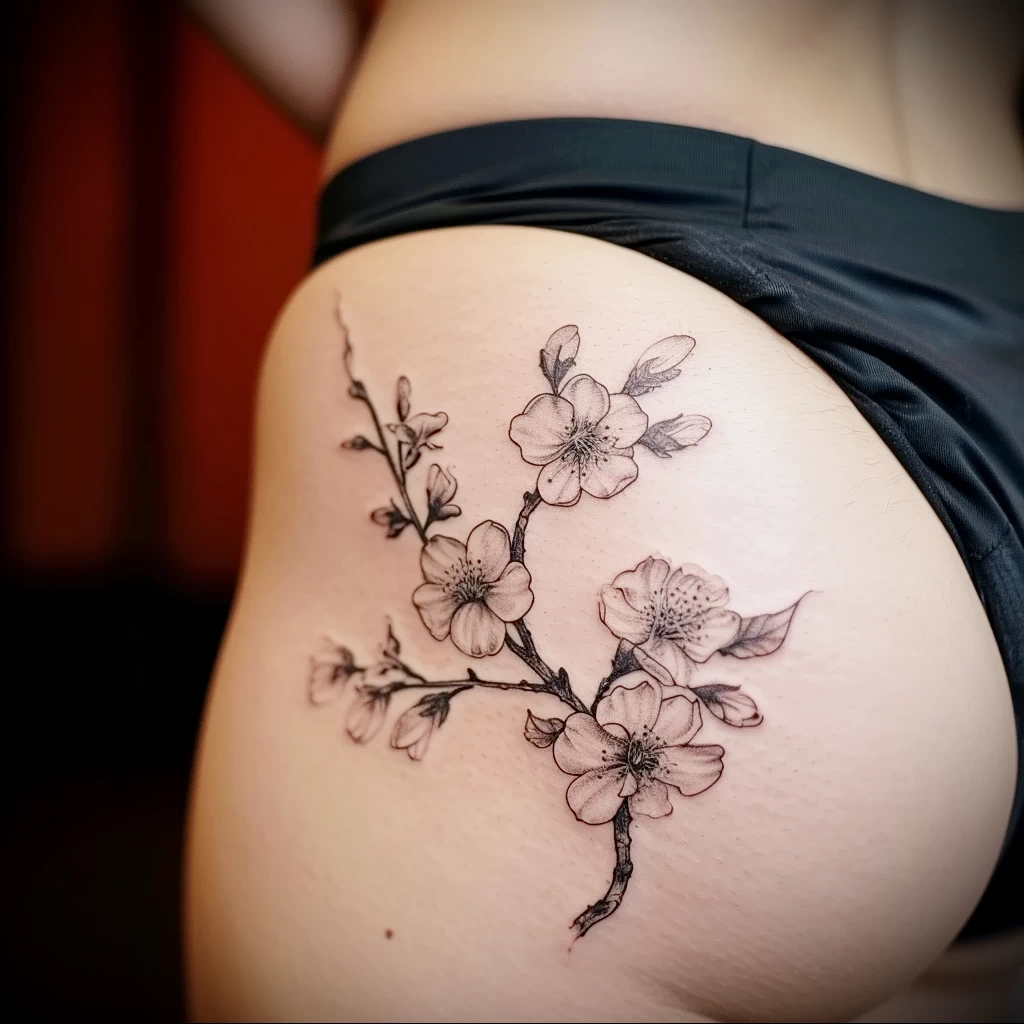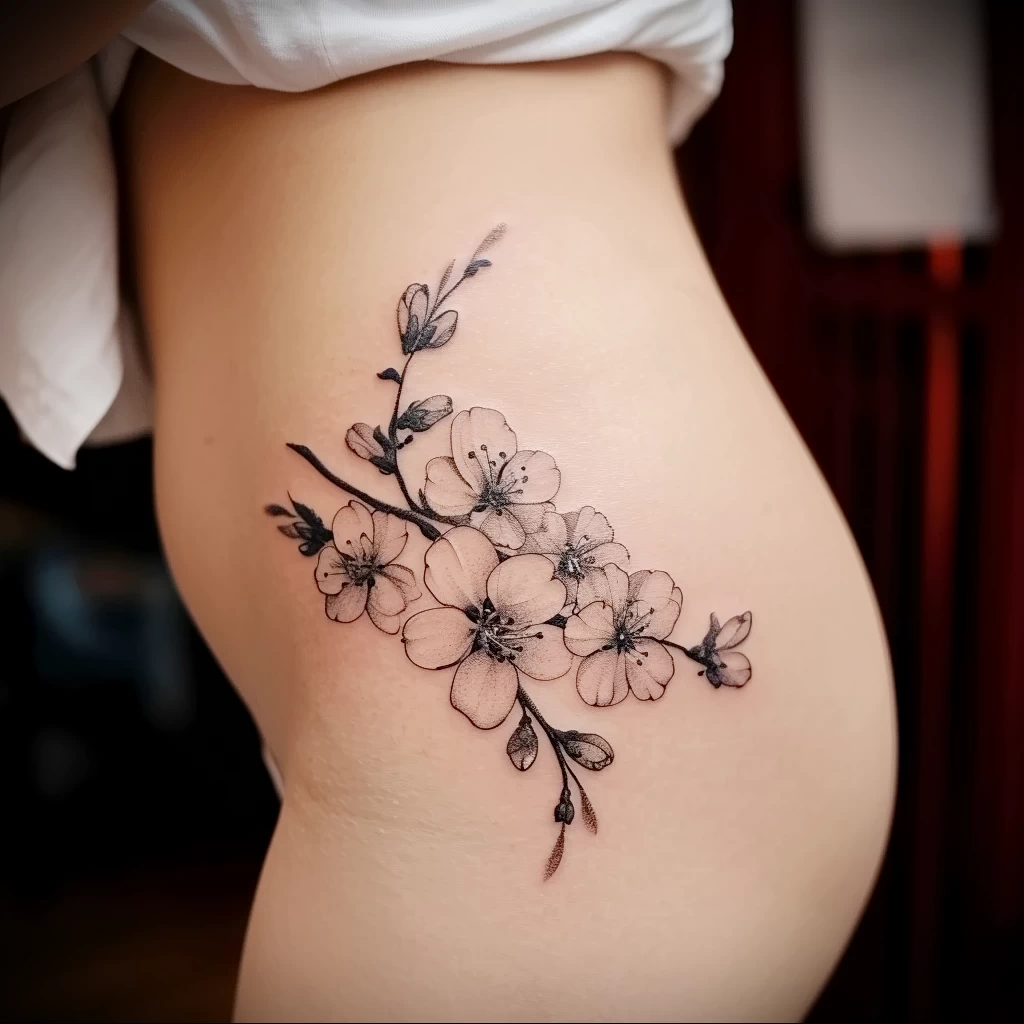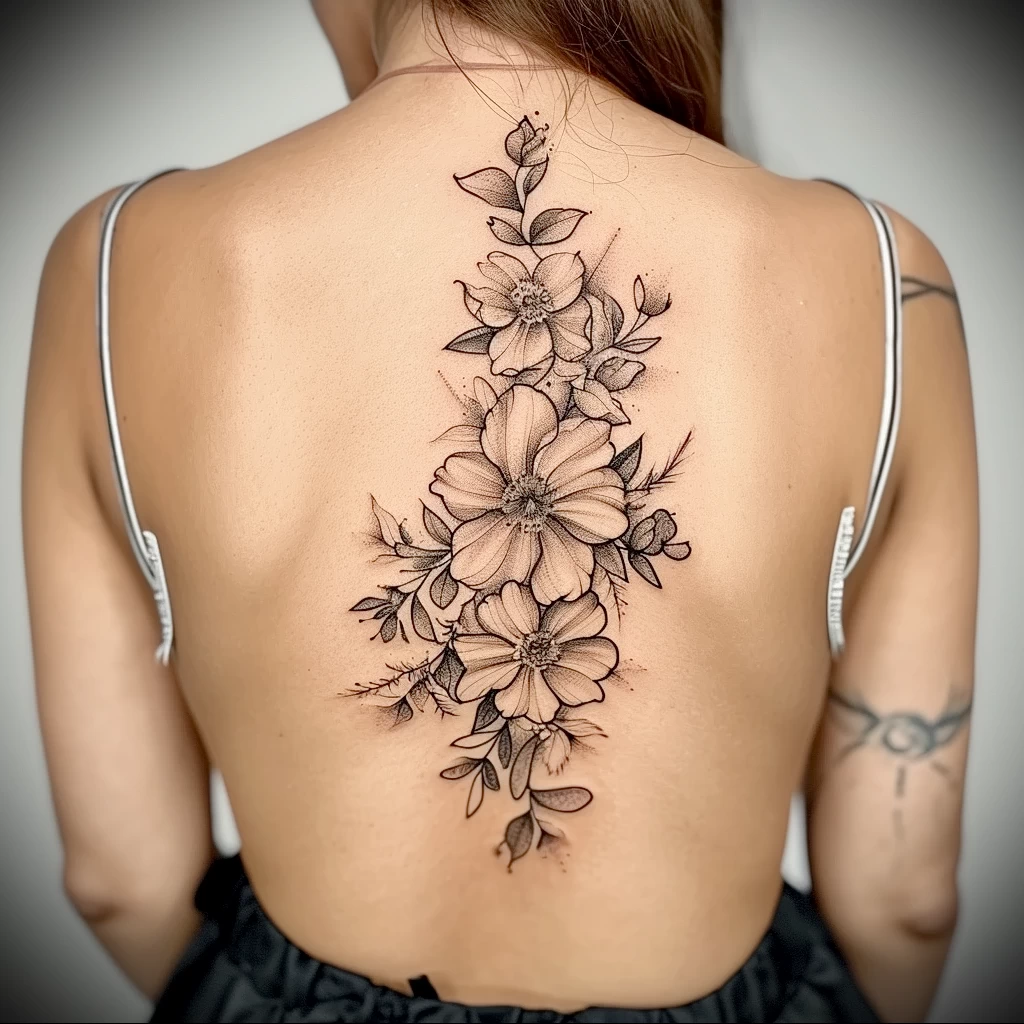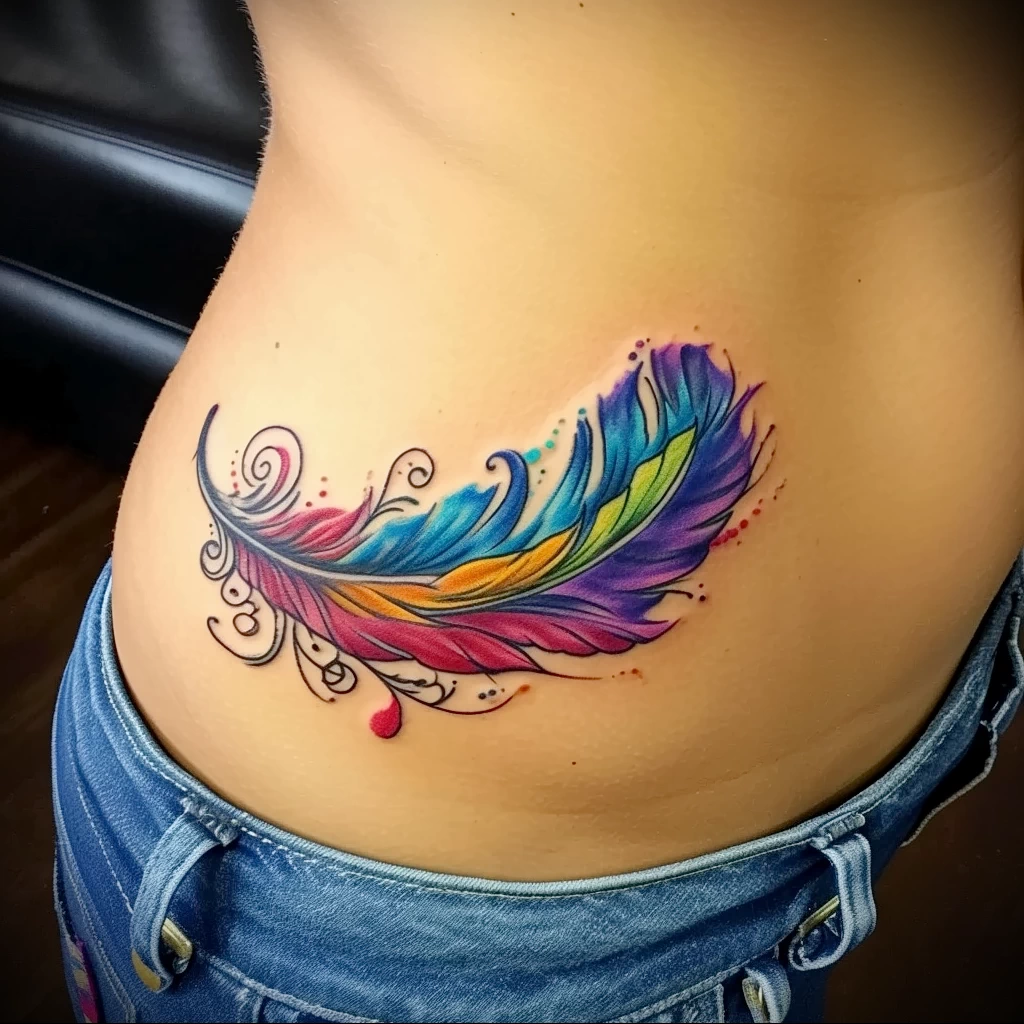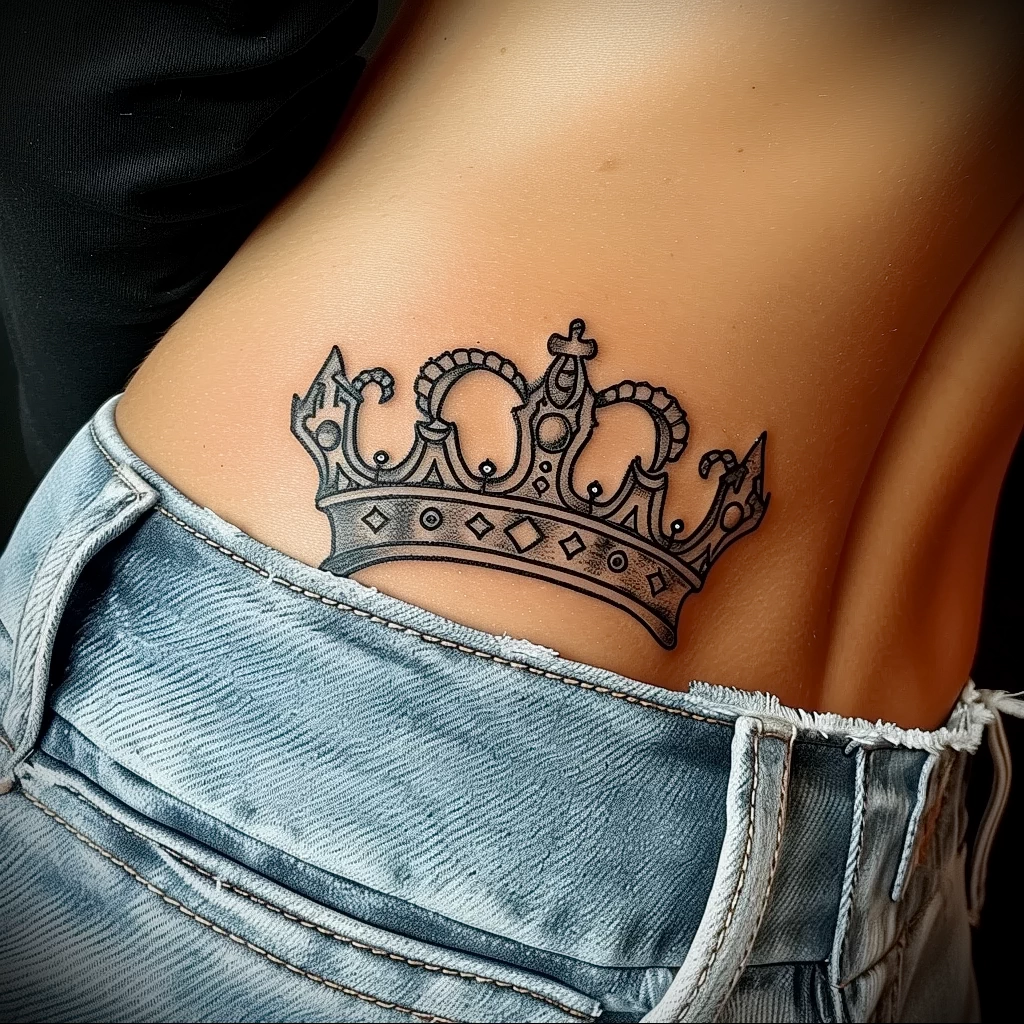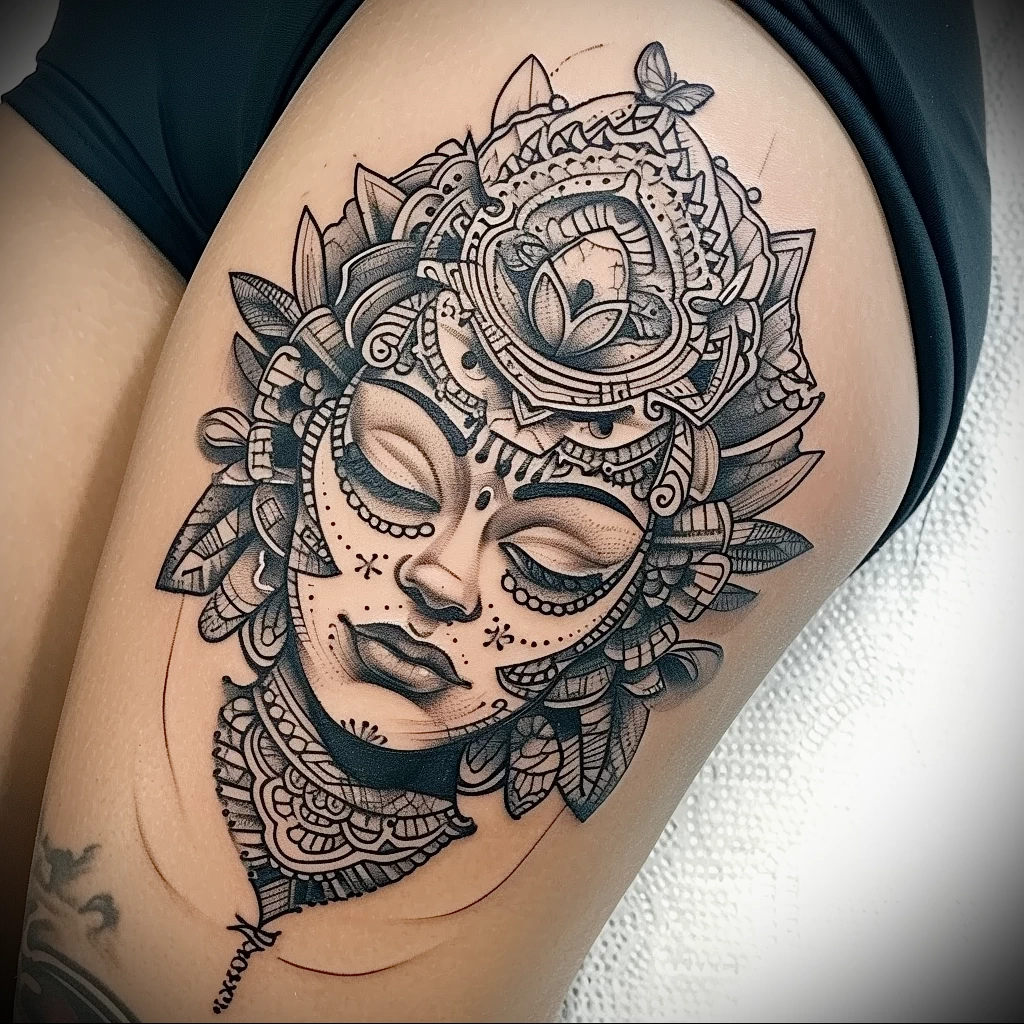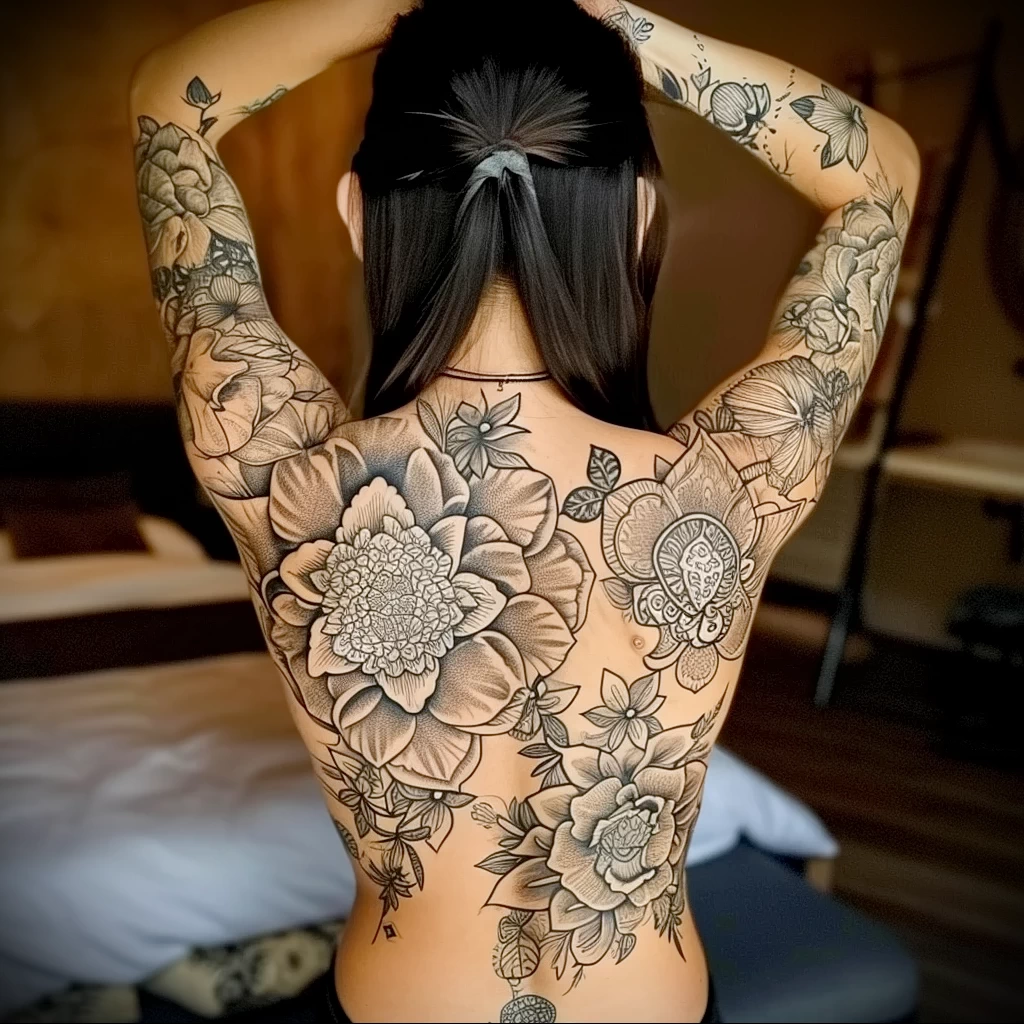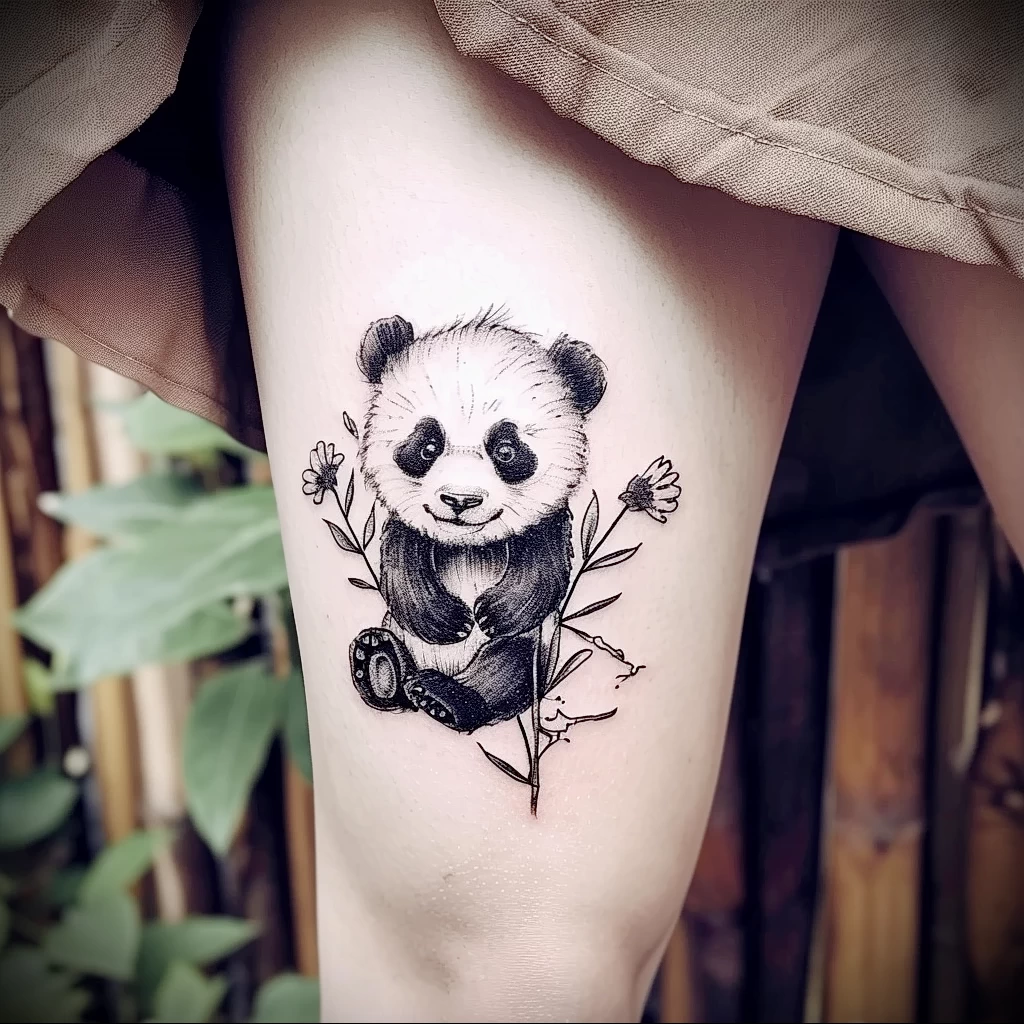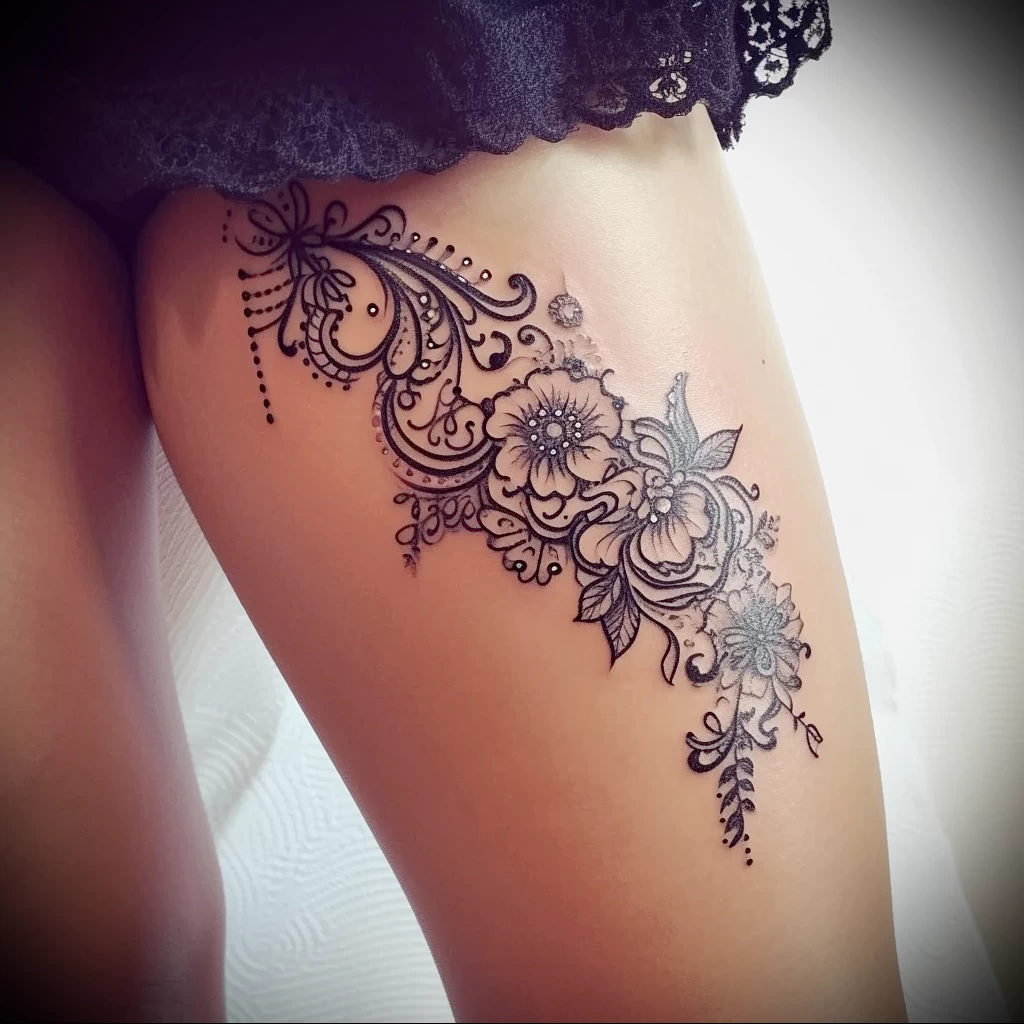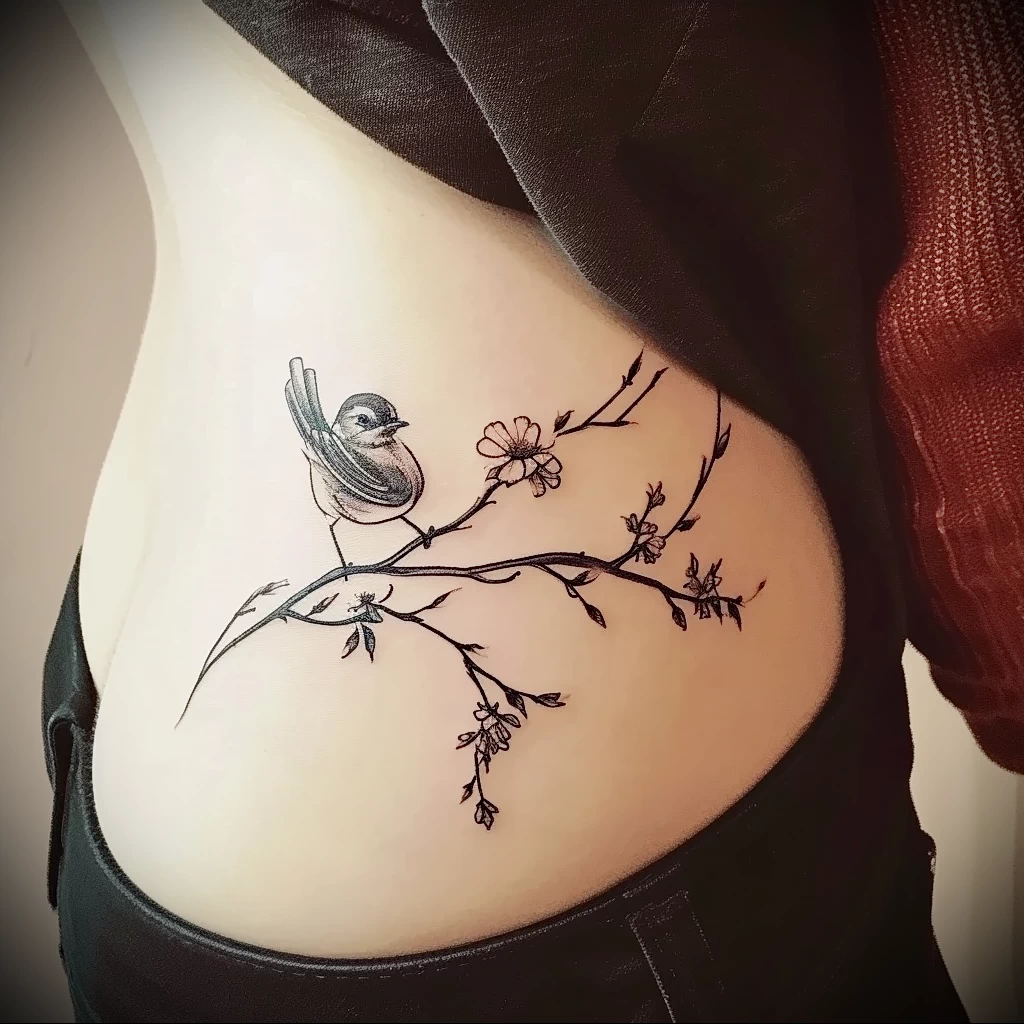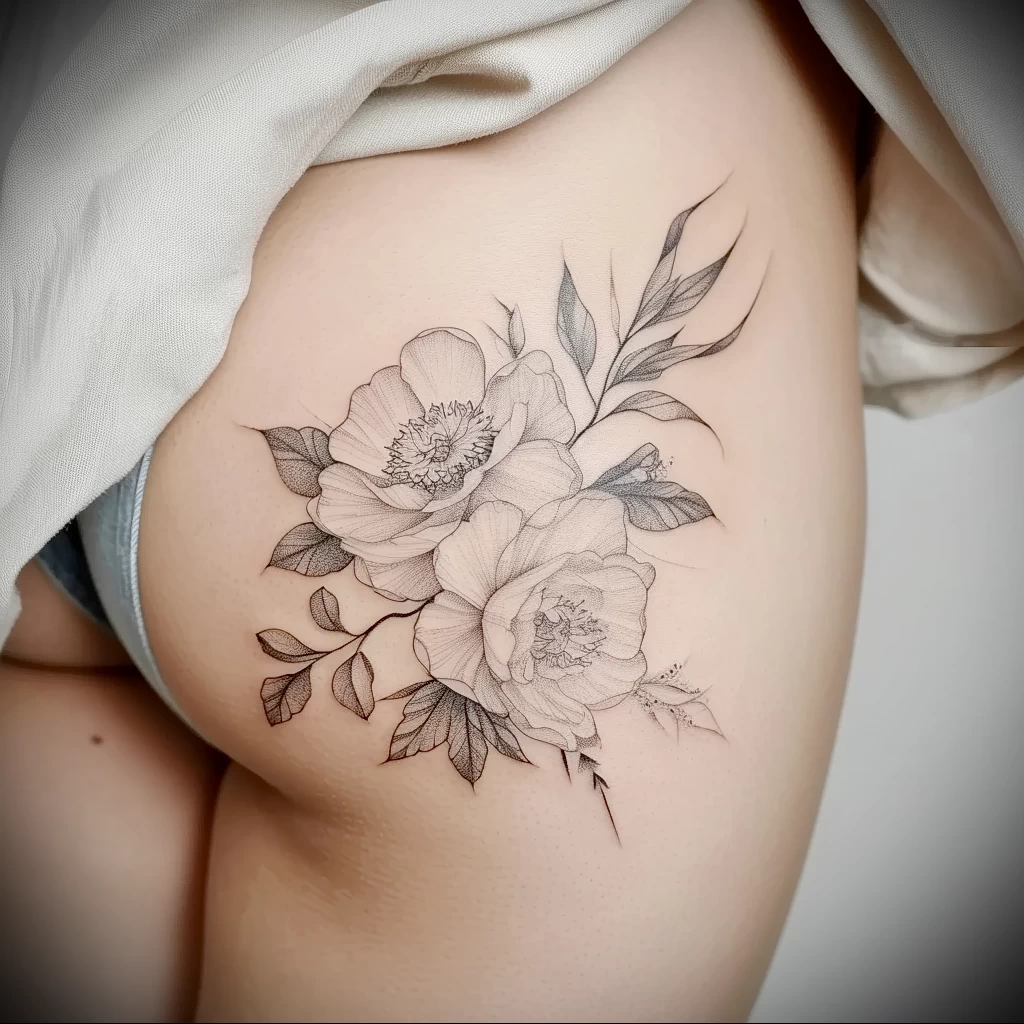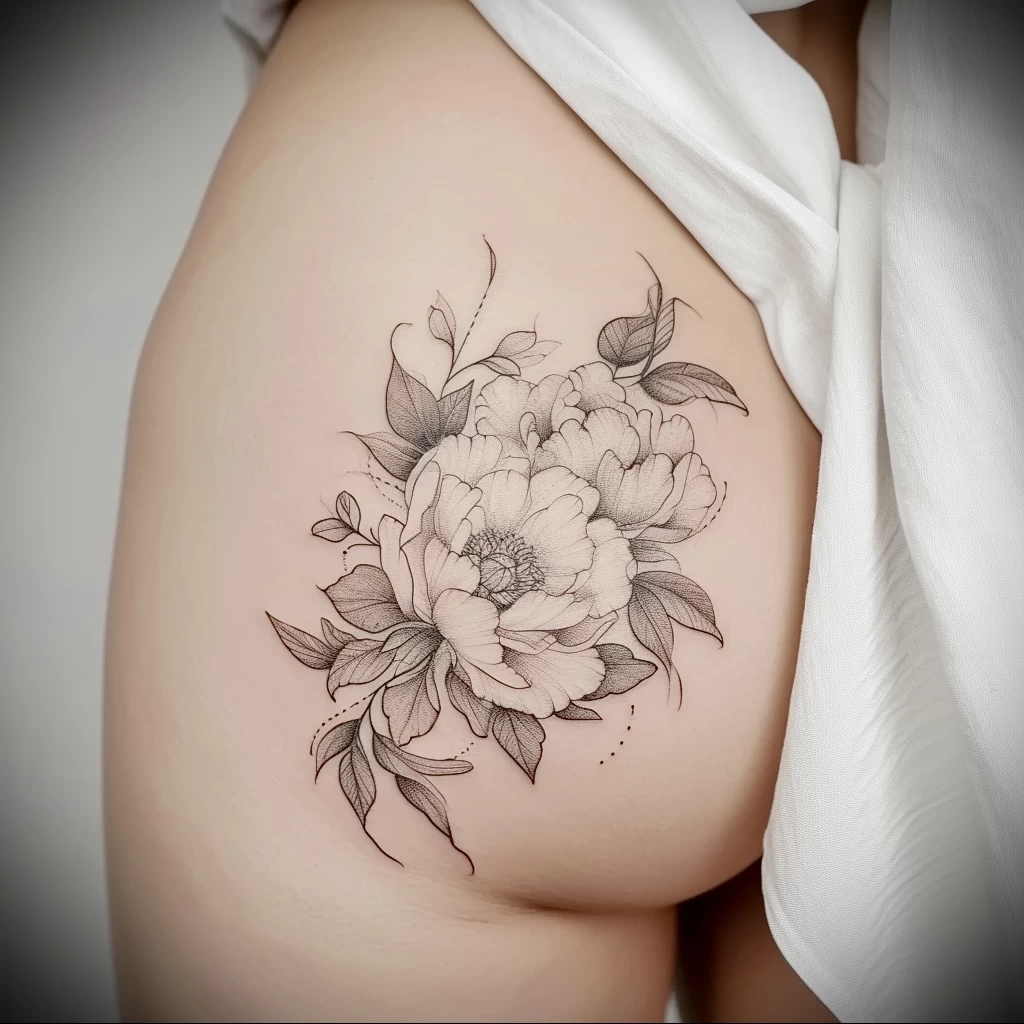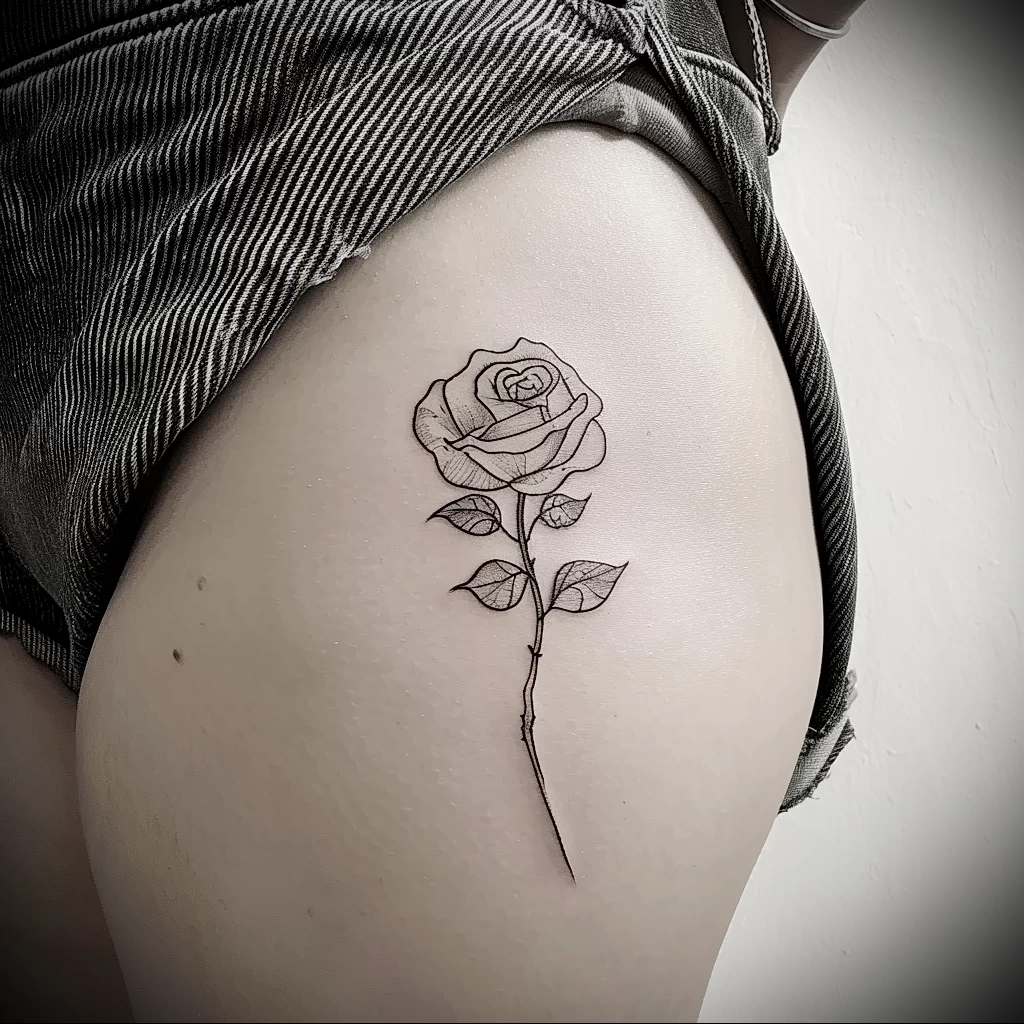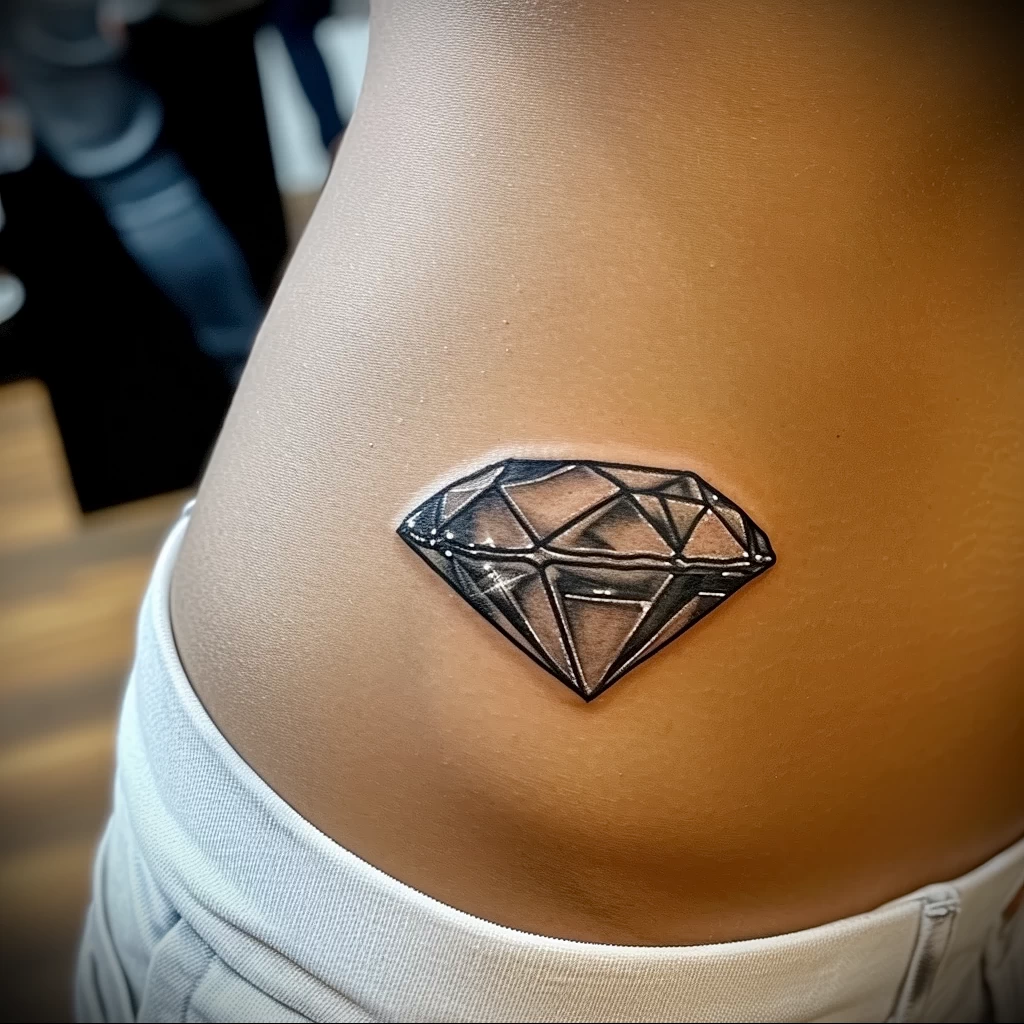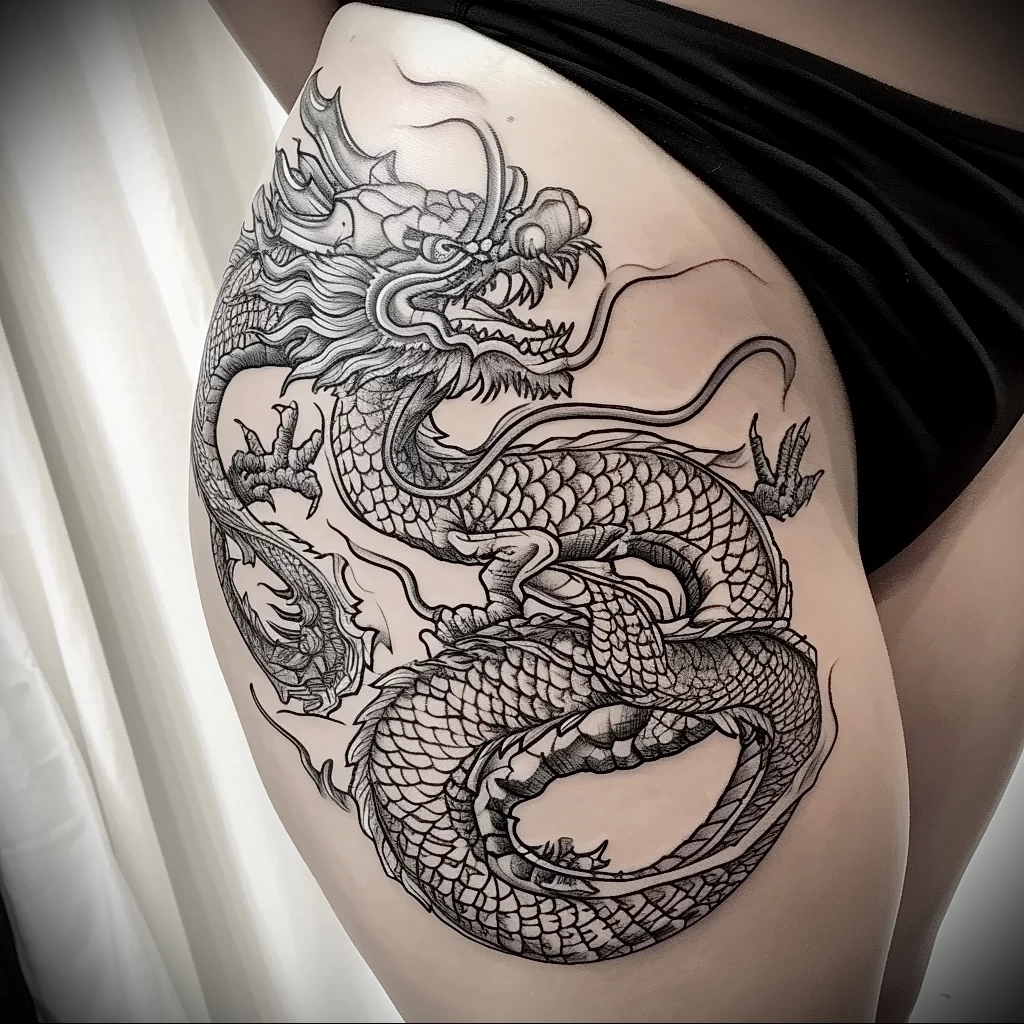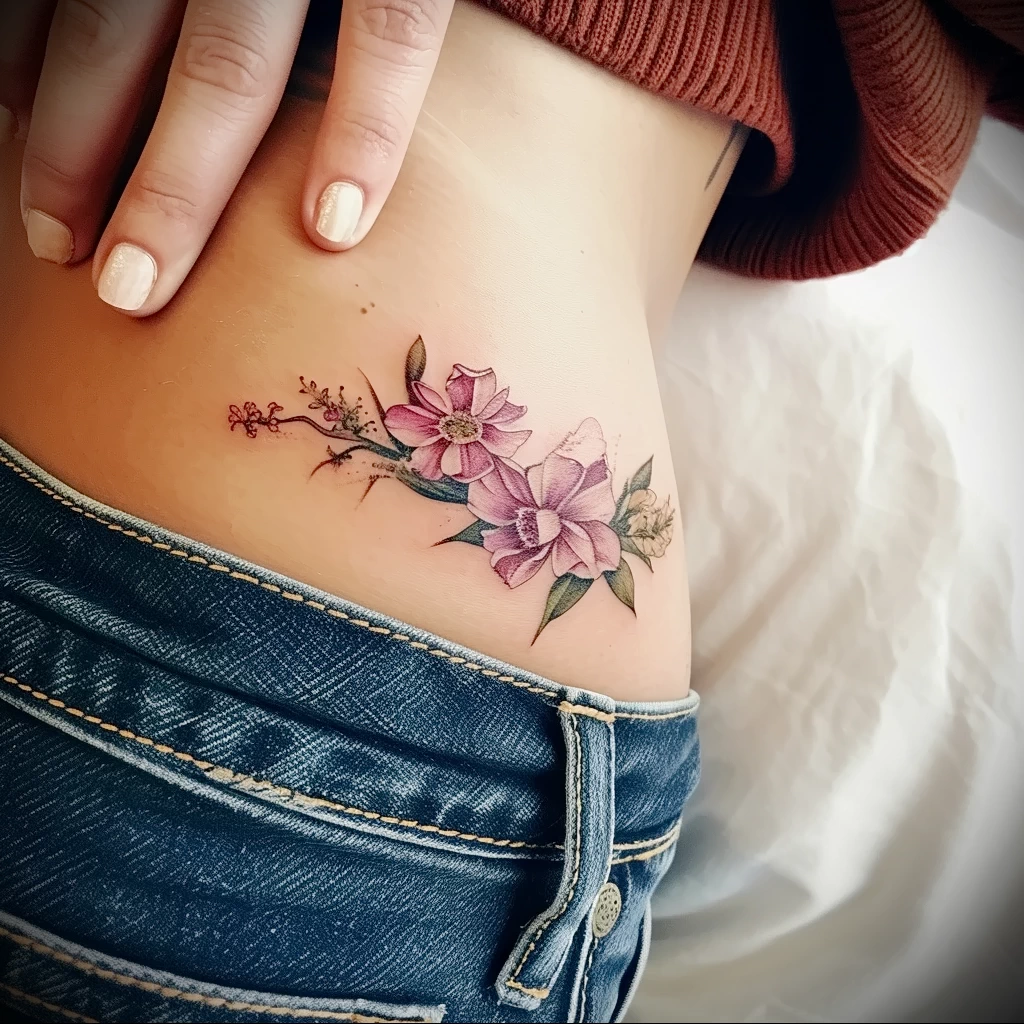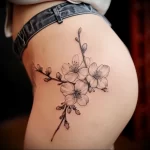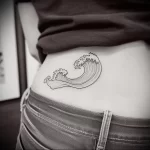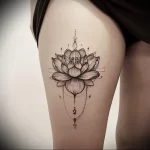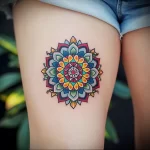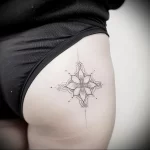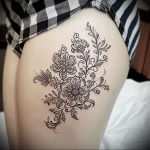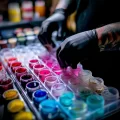Tattoos in intimate areas are not just fashionable decorations but also forms of self-expression and art. However, before making the decision to have a session, it is important to know all the details of this process. Our article will provide you with a complete guide to intimate tattoos: from choosing a design to caring for it after the procedure. Let’s dive into the world of this unique art and understand what to expect.
WHAT TO DO IF YOU WANT TO GET A TATTOO IN AN INTIMATE AREA – INTRODUCTION
Interest in tattoos in intimate areas is growing every year, attracting more and more attention among tattoo enthusiasts. This is a unique way of self-expression that allows a person to stand out, adding something intimate and personal to their appearance. Many choose tattoos in such areas not only because of their hidden location from prying eyes but also to mark an important stage in life, express deep feelings, or boost self-esteem. The reasons people choose to get tattoos in intimate areas can be diverse. For some, it’s a way to add excitement to personal relationships or surprise a partner. Others see it as an opportunity to transform a part of their body that may not inspire confidence into a source of pride and self-respect. There are also those who choose intimate tattoos as symbols of overcoming difficulties or as a sign of their uniqueness and individuality. The approach to choosing a tattoo in an intimate area requires special attention and thoroughness. This is a decision that should be weighed and carefully considered, taking into account not only the aesthetic aspect but also personal feelings, as well as the potential impact on health and well-being. It is important to understand that such a tattoo will accompany a person throughout their life, so the choice should reflect their true desires and values. Introducing oneself to the world of tattoos in intimate areas is not just about considering the aspects of beauty and fashion but also involves a deep dive into the psychology of choice and self-identification. It is a way of interacting with one’s own body, opening up new horizons for personal development and self-awareness. Ultimately, making the decision to get a tattoo in an intimate area becomes not only an aesthetic choice but also a significant step towards self-expression and self-acceptance.
HISTORICAL EXCURSION
The history of tattoos in intimate areas dates back to ancient times, intertwining with the cultural, religious, and even magical traditions of various peoples around the world. Throughout history, tattoos have been used not only as body adornment but also as symbols of protection, belonging to a specific social group or caste, as well as signs of initiation or reaching a certain age and status. In different cultures, tattoos in intimate areas had their unique meanings. For example, in some African and Oceanic tribes, tattoos around the genitalia were performed as a rite of passage from childhood to adulthood. In Japan, intricate tattoos hidden under clothing could indicate affiliation with the yakuza and serve as symbols of strength, courage, and endurance. In European history, tattoos in intimate areas were rare and often associated with sailors, travelers, and representatives of certain subcultures. The cultural significance of such tattoos varied from symbols of fertility and sexuality to protection from evil spirits or diseases. In some societies, tattoos in intimate areas were considered extremely personal and intimate, intended only for the eyes of a spouse, while in other cultures, they were more open and demonstrated as part of social or religious ceremonies. The modern resurgence of interest in tattoos in intimate areas is partly due to people’s desire to express their individuality and break free from social taboos. These tattoos have become a way to explore one’s own sexuality, personal boundaries, and relationship with one’s own body. They can serve as a means of self-expression as well as a tool to boost self-confidence. A historical excursion on the topic of tattoos in intimate areas reveals a rich palette of cultural meanings and customs that have evolved over centuries. It reminds us that choosing to get such a tattoo today is not just a personal decision but also a continuation of ancient traditions adapted to modern realities and individual views on beauty, body, and self-expression.
PREPARATION FOR DESIGN SELECTION
Preparing to choose a tattoo design in an intimate area is an important and meticulous process that requires a deep understanding of your desires and preferences. An informed approach to this step will not only help avoid potential disappointments in the future but also ensure that the result becomes a source of pride and satisfaction for many years to come.
The first step in preparation is to determine the design and style of the tattoo. It’s important to choose an image that will have personal significance for you or symbolize something important. It can be anything from simple geometric shapes to complex abstract compositions reflecting your individuality and uniqueness. Consider integrating elements that reflect your personality, interests, life goals, or significant events.
An intimate area tattoo is often perceived as the most personal body adornment, so it should carry deep meaning. Before making a final decision, ask yourself questions like, “What does this image mean to me?” and “Will this meaning be relevant for many years to come?” Such a tattoo can serve as a reminder of important life stages, achievements, or personal growth.
Choosing the artist is a crucial moment in the tattooing process. Look for a master whose work you admire and who has experience with tattoos in intimate areas. Discuss your idea, design preferences, and possible implementation options with them. Don’t hesitate to ask questions and express your thoughts – a good artist will always engage in dialogue and help adapt your idea to best suit your desires and your body’s characteristics.
Preparing to choose a tattoo design in an intimate area is a process that requires time, patience, and a creative approach. It’s important to remember that this tattoo will be with you for many years, so approaching its selection with special care and seriousness is necessary. Collaborating with an experienced and attentive tattoo artist will help bring even the boldest idea to life, making the tattooing process a comfortable and enjoyable experience.
CHOOSING A STUDIO AND ARTIST
Choosing a studio and artist for an intimate area tattoo is one of the most critical aspects of the entire process. Making the right choice will not only ensure high-quality initial results but also guarantee the safety and hygiene of the procedure. Here are a few key points to help make an informed decision.
FINDING THE RIGHT STUDIO AND QUALIFIED ARTIST
Research and recommendations: Start by studying online reviews and recommendations from acquaintances who already have experience with tattoos, especially in intimate areas. Social media and specialized forums can provide extensive information about the reputation of studios and artists.
Visiting the studio: Before making a final decision, visit the studio in person. This will give you an idea of the cleanliness and orderliness of the workspace, as well as allow you to assess the overall atmosphere and staff attitude.
THE IMPORTANCE OF THE ARTIST’S PORTFOLIO AND CLIENT REVIEWS
Portfolio: Carefully examine the artist’s portfolio to assess their style, quality of work, and experience with tattoos in intimate areas. Look for works that are close to your desired design and style.
Client reviews: Reviews can tell a lot about the professionalism of the artist and their attitude toward clients. Pay attention to comments about comfort during the session, as well as feedback on the healing process and long-term results of the work.
IMPORTANT QUESTIONS TO ASK THE ARTIST BEFORE THE PROCEDURE
Experience with intimate areas: Clarify how much experience the artist has with tattoos in intimate areas and whether they have special techniques to minimize discomfort.
Hygiene and safety: Confirm that the studio adheres to all hygiene and safety standards. Ask about instrument sterilization procedures and the use of disposable materials.
Process and preparation: Discuss the entire tattooing process with the artist, including preparation for the session, duration of work, and the need for subsequent touch-ups.
Choosing the right studio and artist requires time and careful consideration. Don’t rush your decision and don’t hesitate to ask questions. Your safety, comfort, and satisfaction with the final result depend on this choice. Remember that a well-executed tattoo in an intimate area is not only a beautiful body adornment but also an important step towards self-expression and self-acceptance.
HEALTH AND SAFETY
Health and safety when getting tattoos in intimate areas are paramount during the tattooing process. Proper care and precautionary measures are key to ensuring not only a beautiful outcome but also to avoid any health-related risks. Here are the main aspects to consider:
Before starting the procedure, it’s important to discuss with the artist the safety and hygiene measures followed in the salon. Make sure the artist uses disposable needles and gloves, as well as sterilized instruments. The work surfaces should be clean, and all materials used during the session should be new and sealed.
Before visiting the salon, it is recommended to refrain from consuming alcohol and painkillers, as they can increase bleeding. It’s also worth considering a light snack to avoid dizziness during the session. Be sure to take a shower and maintain body hygiene, especially in the area where the tattoo will be done.
As with any tattooing, there is a risk of infection and allergic reactions to the ink. To minimize these risks, choose a reputable salon with an experienced artist. After the procedure, it’s important to carefully follow the artist’s instructions for tattoo care to ensure proper healing.
The artist will provide care instructions for the tattoo, which may include recommendations for using antibacterial soap, applying special healing ointments, and avoiding water contact with the tattoo in the first few days after the procedure. Following these recommendations will help speed up the healing process and maintain the quality of the image.
Thoroughly observing all safety and hygiene measures, as well as proper care for the tattoo after the procedure, play a crucial role in ensuring the health and beauty of the tattoo in the intimate area. It is important to remember that caring for your own health and safety should be a top priority when making such a significant decision as getting a tattoo.
TATTOOING PROCESS
The tattooing process in intimate areas can be significantly different from tattooing other parts of the body, not only due to the increased sensitivity of the area but also because of the personal and intimate nature of the act itself. Understanding what to expect during the session, how to manage pain and discomfort, and knowing the proper tattoo care after the procedure are crucial for ensuring a positive experience.
WHAT TO EXPECT DURING THE TATTOO SESSION
Prepare yourself as the process can be quite painful, especially in very sensitive areas. The duration of the session will depend on the size and complexity of the design. The artist should use disposable needles and gloves and ensure the cleanliness and sterility of all instruments. During the procedure, the artist may use special numbing agents to reduce discomfort.
TIPS FOR MANAGING PAIN AND DISCOMFORT
- Breathing exercises: Focus on deep and rhythmic breathing to help relax and reduce pain.
- Conversation with the artist: Communicating during the session can distract and help cope with discomfort.
- Breaks: Don’t hesitate to ask for short breaks if you feel it’s necessary.
POST-PROCEDURE TATTOO CARE
Proper care for the tattoo immediately after the session is critical for its healing and longevity. The artist will provide instructions, which typically include:
- Cleanliness: Regularly wash the tattoo with mild antibacterial soap.
- Moisturizing: Use the ointments and creams recommended by the artist to maintain skin moisture.
- Sun protection: Protect the tattoo from direct sunlight until it is fully healed.
- Avoiding water: Try not to wet the tattoo for the first few days and avoid prolonged water immersion, such as in a bath or pool.
Remember that tattoo healing is a process that can take from several weeks to several months, depending on individual body characteristics and care. Following all the artist’s recommendations and careful tattoo care will help ensure its beauty and health for years to come.
TATTOO CARE
Taking care of your tattoo in the first days and weeks after the procedure plays a key role in the healing process and maintaining the quality of the image. Effective care begins immediately after the tattooing session and includes several important steps to prevent infection and expedite healing.
CARE INSTRUCTIONS FOR THE FIRST FEW DAYS
Immediately after the procedure:
- The artist will cover the fresh tattoo with a sterile bandage or film to protect it from bacteria and prevent irritation from clothing. This dressing should be left in place for several hours according to the artist’s recommendations.
First cleaning:
- After removing the dressing, gently wash the tattoo with warm water and mild antibacterial soap. Avoid using a sponge or loofah to prevent skin damage.
Moisturizing:
- Gently pat the tattoo dry with a clean towel and apply a thin layer of special moisturizing cream or ointment for tattoo healing. Use products recommended by the artist to avoid allergic reactions and other issues.
LONG-TERM CARE AND COLOR PRESERVATION RECOMMENDATIONS
Regular care:
- During the first two weeks, regularly wash and moisturize the tattoo following the artist’s instructions. This will help maintain skin health and promote healing.
Sun protection:
- After the tattoo has healed, it’s important to protect it from direct sunlight using sunscreen with a high SPF. UV radiation can significantly accelerate color fading and blur the contours.
Long-term moisturizing:
- Regularly moisturizing the skin will help preserve the brightness of colors and the sharpness of tattoo lines. Use quality moisturizing creams suitable for your skin type.
Avoiding mechanical damage:
- Avoid wearing tight clothing over the tattoo, especially in the first weeks after the procedure, to prevent friction and skin irritation.
By following these recommendations, you’ll not only expedite the healing process but also help ensure that your tattoo remains vibrant, clear, and beautiful for years to come. Remember that proper tattoo care is not only about maintaining the fresh appearance but also a long-term investment in preserving the beauty and health of your skin.
PSYCHOLOGICAL ASPECTS
The psychological aspects of tattoos in intimate areas encompass a wide range of emotions and reactions, both from the individual themselves and from those around them. These tattoos can play a significant role in a person’s personal life, affecting their self-esteem, body image perception, and even interpersonal relationships.
A tattoo in an intimate area can be a source of new sensations and self-confidence. For many people, such an act of self-expression is a way of self-acceptance, body positivity, and liberation from social stereotypes. It can help a person feel more attractive and unique, as well as strengthen their self-respect through personal choice and expression through art.
The decision to get a tattoo in an intimate area is deeply personal and may not always be understood or accepted by others. It’s important to be prepared for various reactions, including misunderstanding, criticism, or even condemnation from more conservative members of society or close acquaintances. Preparing for these reactions involves strengthening personal confidence in the validity of one’s choice and the ability to defend one’s viewpoint with respect for oneself and others.
Before getting a tattoo in an intimate area, it’s helpful to undergo psychological preparation:
- Reflection. Ask yourself questions about why you want this particular tattoo and what expectations you have associated with it.
- Exploration. Familiarize yourself with the experiences of other people who already have tattoos in intimate areas to better understand the potential psychological and emotional consequences of your choice.
- Support. Discuss your decision with trusted individuals who can offer support and understanding.
A tattoo in an intimate area can be a significant and meaningful step in a person’s life, symbolizing personal growth, self-acceptance, and individuality. However, it’s important to remember that such a decision should be thoughtful and conscious, considering both the aesthetic aspect of the matter and the potential impact on psychological well-being and interpersonal relationships.
SUMMARY ON INTIMATE TATTOOS
In conclusion, it’s important to summarize the key points to consider if you decide to get a tattoo in an intimate area. This step is significant and a personal decision, and it should be approached with special care.
- Personal Significance: Remember that an intimate tattoo should have personal significance for you and reflect your beliefs, feelings, or important life events.
- Artist and Salon: Choose the artist and salon carefully, explore their portfolios, read client reviews, and ensure their professionalism.
- Safety Measures: Discuss with the artist all safety measures and hygiene standards to ensure the safety of the procedure.
- Aftercare: Follow the artist’s instructions for tattoo care in the first weeks and months after the procedure.
- Psychological Readiness: Prepare for possible emotional and psychological reactions to your choice, both from yourself and from others.
- Self-Expression: Remember that a tattoo is a form of self-expression and art that can help you express your individuality and strengthen your self-esteem.
It’s important to emphasize that the decision to get a tattoo in an intimate area is your personal choice, and you have the right to self-expression and creativity with your own body. Do not allow interference from others in this personal process, and act according to your comfort and desires.
An intimate tattoo can become not only an adornment but also a symbol of personal development and self-acceptance. Remember that this decision should be thoughtful and conscious, and it’s important to follow all recommendations and safety measures to ensure the beauty and health of your tattoo.
